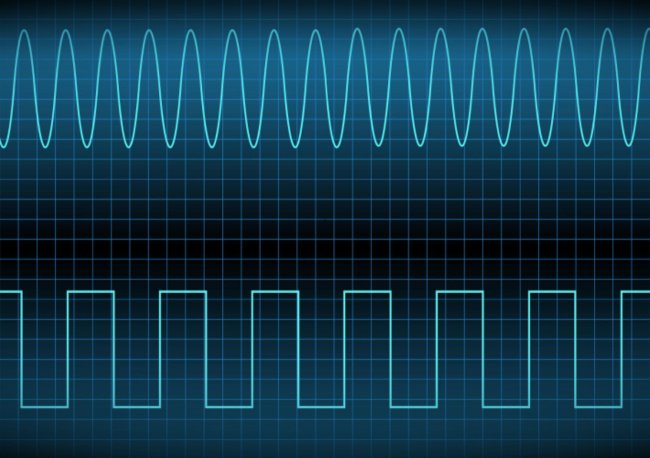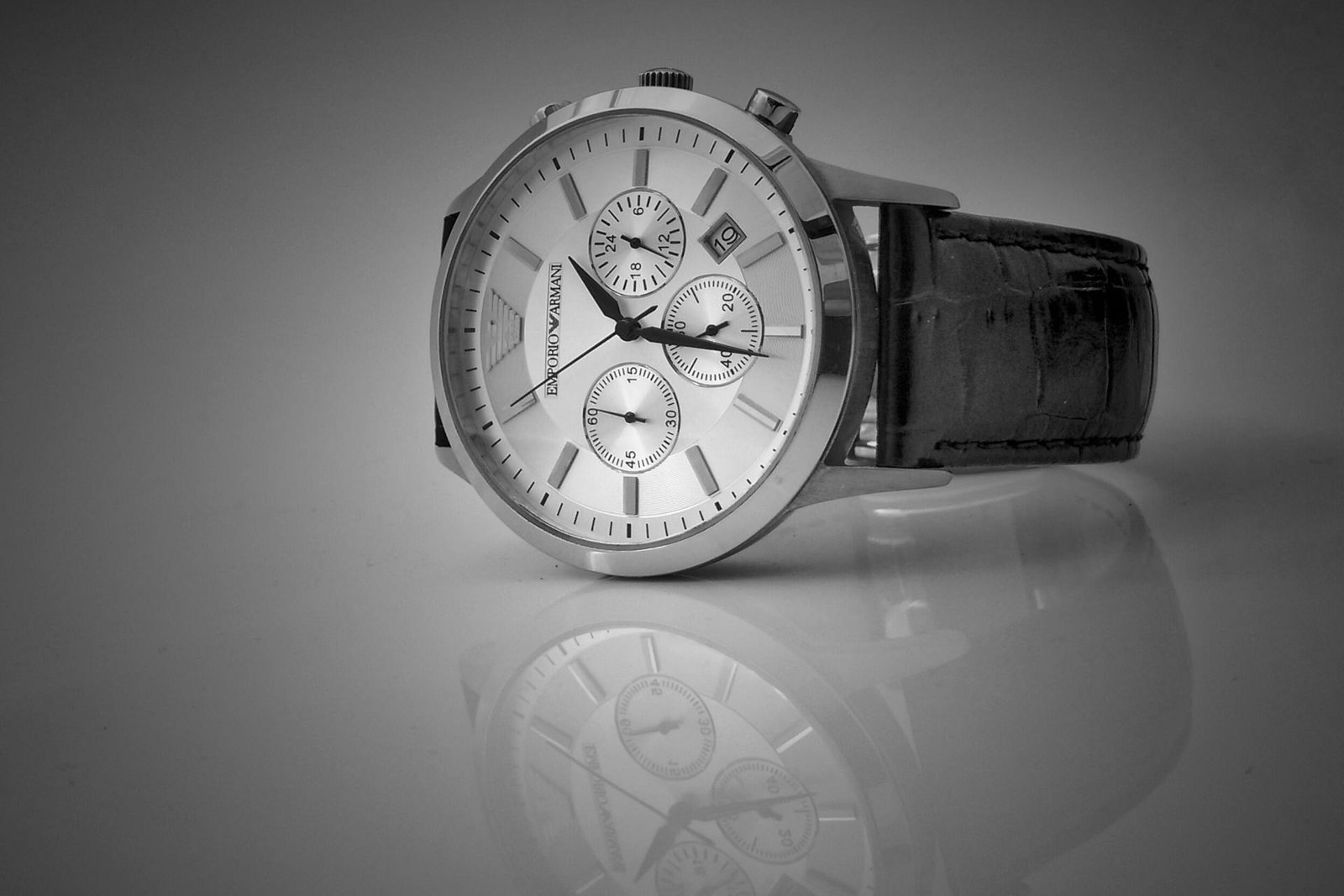Pure sine wave inverters are sophisticated devices that transform direct current (DC) into alternating current (AC), providing power akin to that of utility companies. They are essential for operating sensitive electronics smoothly and efficiently. Understanding how they work, their advantages, and practical applications can help you make an informed decision when considering a pure sine wave inverter for your power needs. This article explores the intricacies of pure sine wave inverters, from their technical workings to their practical applications and the benefits they offer over conventional inverters.
Table of Contents
ToggleKey Takeaways
- Pure sine wave inverters convert DC to AC, producing a smooth and stable waveform that is ideal for sensitive electronics.
- The conversion process involves pulse width modulation (PWM) and sine wave generation techniques to achieve a clean AC signal.
- These inverters provide numerous advantages including stable power, safety features, and efficiency, especially with inductive loads.
- Choosing the right inverter requires understanding wattage ratings, assessing brand quality, and considering additional features for enhanced performance.
- Pure sine wave inverters integrate well with renewable energy sources and offer a cost-effective solution for reliable power in various applications.
Understanding Pure Sine Wave Inverters
Definition and Basic Function
A pure sine wave inverter is a device that converts DC power into AC power, typically at 220V and 50Hz, which is the standard for most household appliances. Unlike modified sine wave inverters, pure sine wave inverters produce a smooth, continuous wave, which is essential for powering sensitive electronic devices without causing damage or interference.
The inverter bridge, control logic, and filtering components work together to ensure the output closely matches a natural sine wave.
The importance of a pure sine wave becomes evident when considering the operational needs of devices such as medical equipment, high-end audio systems, and certain industrial applications. These inverters are designed to mimic the power supplied by utility companies, providing a stable and consistent current that is safe for all types of electronics.
Comparing Waveforms: Pure vs. Modified Sine Wave
When it comes to inverter technology, the type of waveform produced is a critical factor that affects the performance and compatibility of the inverter with various devices. Pure sine wave inverters deliver a smooth and consistent output that closely mimics the power supplied by utility companies. In contrast, modified sine wave inverters generate a stepped or blocky waveform that can be less suitable for sensitive electronics.
- Waveform Quality: Pure sine wave inverters provide a waveform with very low harmonic distortion, ensuring a clean and stable power supply. Modified sine wave inverters, however, may introduce higher levels of distortion.
- Efficiency: The efficiency of pure sine wave inverters is generally higher, as they convert DC to AC power with minimal energy loss. Modified sine wave inverters may lead to inefficiencies and potentially cause some devices to run hotter or less effectively.
- Usability: While modified sine wave inverters can power many household appliances, they may struggle with or even damage sensitive electronics that require a pure sine wave.
The choice between a pure and a modified sine wave inverter should be guided by the specific needs of your devices and the importance of waveform quality for their operation. Pure sine wave inverters are the preferred choice for ensuring the safety and longevity of connected equipment.
Key Components and Their Roles
The construction of a pure sine wave inverter involves several critical components, each playing a pivotal role in the conversion of direct current (DC) to alternating current (AC). The inverter’s transformer, for instance, is essential in stepping up the voltage to the required AC levels.
- Power Switches: These are responsible for the rapid switching necessary to create the AC waveform.
- Control Circuitry: Governs the timing and sequence of power switch activation.
- Oscillator: Generates the initial waveform that is later refined into a pure sine wave.
- Filtering Elements: Smooth out the waveform to minimize harmonic distortion.
The synergy between these components is what allows the inverter to produce a clean and stable AC output, which is crucial for the operation of sensitive electronic devices.
The Technical Workings of a Pure Sine Wave Inverter
The Conversion Process: DC to AC
The core function of a pure sine wave inverter is to convert direct current (DC) from sources like solar panels or batteries into alternating current (AC), which is used to power a wide range of household devices. DC power is unidirectional and maintains a constant voltage level, making it ideal for low voltage applications but not suitable for typical household electronics that require AC power.
The conversion process begins with the inverter taking the steady DC input and transforming it into AC. This is achieved through a series of stages, including voltage boosting and waveform modification. The final output is a smooth and stable AC signal, thanks to advanced algorithms and sine wave generation techniques that ensure the power closely mimics that of a standard electrical grid.
The quality of the AC output is critical, as it determines the compatibility and safety of the power supplied to connected devices. Pure sine wave inverters are designed to deliver a clean and consistent AC signal, which is especially important for sensitive electronics.
To understand the requirements for different inverter sizes, consider the following table which outlines the minimum battery bank sizing for various inverter capacities:
| Inverter Size | 50AH | 100AH | 170AH |
|---|---|---|---|
| 700W | 1 | 1 | 1 |
| 1000W | 2 | 1 | 1 |
| 2000W | 4 | 2 | 1 |
| 3000W | 6 | 3 | 2 |
Pulse Width Modulation Explained
Pulse width modulation (PWM) is a technique used to regulate the output voltage in inverters, particularly in the context of DC to AC conversion. By altering the width of the pulses generated, PWM inverters can effectively control the power delivered from the DC source. This method involves rapidly switching the DC power on and off, producing a square wave signal that approximates an AC waveform.
The square wave, however, is not suitable for sensitive electronics due to its abrupt voltage changes. To address this, the signal undergoes a filtering process that removes the high-frequency components, resulting in a waveform that more closely resembles a pure sine wave. This smoother signal is essential for the proper functioning of delicate devices and equipment.
The effectiveness of PWM lies in its ability to create a variable output by simply adjusting the duration of the ‘on’ and ‘off’ states within each cycle. This flexibility allows for a more refined control over the inverter’s output, ensuring that the power supplied is both stable and reliable.
In the context of pure sine wave inverters, PWM is a critical stage that precedes the final output. It sets the foundation for further refinement and smoothing of the waveform, which is crucial for achieving the high-quality power output that these inverters are known for.
Sine Wave Generation and Smoothing Techniques
The sine wave generation stage is pivotal in ensuring the AC power from the inverter matches the quality of grid electricity. Algorithms and complex techniques are used to refine the DC signal into a pure sine wave, which is essential for the optimal operation of sensitive electronics. This sophistication is a primary reason for the higher cost of pure sine wave inverters.
The waveform produced by pure sine wave inverters is significantly smoother and more consistent than that of modified sine wave inverters. The latter generates a stepped, less smooth waveform with sharp voltage variations, which can be detrimental to certain devices. In contrast, a pure sine wave inverter provides a stable current that switches on and off at regular intervals, ensuring a smoother and consistent current flow.
With a pure sine wave inverter, devices run within their intended power levels, enhancing efficiency and preventing damage from power surges. Brands like BLUETTI are known for producing particularly clean signals, underscoring the importance of selecting a quality inverter.
The table below summarizes the differences between the waveforms of pure and modified sine wave inverters:
| Feature | Pure Sine Wave Inverter | Modified Sine Wave Inverter |
|---|---|---|
| Waveform Consistency | Smoother and more stable | Less smooth, stepped |
| Voltage Variation | Consistent | Sharp changes |
| Device Compatibility | High | Limited |
| Cost | Higher | Lower |
Advantages of Using Pure Sine Wave Inverters
Stable AC Power for Sensitive Electronics
Pure sine wave inverters provide a level of power quality that is essential for sensitive electronics. Devices such as high-precision medical equipment, audio systems, and computers require stable and consistent AC power to operate correctly. The clean signal output from a pure sine wave inverter closely mimics that of household AC power, ensuring these devices function within their designed parameters.
The advanced technology in pure sine wave inverters not only enhances the performance of sensitive electronics but also contributes to their longevity by protecting against power irregularities.
For example, audio processing circuits are particularly susceptible to power quality. A pure sine wave inverter ensures that these devices receive a distortion-free power supply, which is critical for maintaining sound integrity. Similarly, oscillating devices rely on a steady power flow to prevent malfunction or damage.
- Ensures compatibility with high-precision devices
- Protects against voltage spikes and drops
- Maintains the integrity of audio and visual signals
- Contributes to the efficient operation of inductive loads like motors and transformers
Safety Features and Device Protection
Pure sine wave inverters are designed with numerous safety features to protect both the inverter itself and the devices connected to it. Overload protection ensures that the inverter shuts down before damage occurs due to excessive power draw. Similarly, over-temperature protection prevents overheating, which can be a common issue with electronic devices.
The integration of safety mechanisms is crucial for maintaining the longevity of both the inverter and your valuable electronics.
In addition to these, many inverters come with specialized features such as short-circuit protection and automatic voltage regulation. These features not only safeguard the inverter but also provide a stable power supply for sensitive equipment. For instance, the Ampeak 2000W Pure Sine Wave Power Inverter includes 17 different protections, highlighting the importance manufacturers place on device safety.
Here is a list of common safety features found in pure sine wave inverters:
- Overload protection
- Over-temperature shutdown
- Short-circuit protection
- Automatic voltage regulation
- Low voltage alarm & shutdown
- High voltage shutdown
- Cooling fan operation based on load/temperature
Efficiency in Inductive Loads
Pure sine wave inverters are particularly beneficial when powering inductive loads, which include devices with motors such as air conditioners, refrigerators, and power tools. These inverters ensure that such appliances run faster, quieter, and cooler, enhancing their performance and extending their lifespan.
In contrast to modified sine wave inverters, pure sine wave inverters provide a smoother electrical current that resembles utility-supplied electricity. This results in less stress on the inductive components, leading to improved energy efficiency. For example, a microwave oven using a pure sine wave inverter will heat food more evenly and operate with reduced noise.
The efficiency gains from using a pure sine wave inverter can be substantial, especially in environments where inductive loads are prevalent, such as in an RV. Furthermore, pure sine wave inverters contribute to energy efficiency and conservation in the RV environment.
Selecting the Right Pure Sine Wave Inverter
Understanding Wattage Ratings and Power Needs
Selecting the right pure sine wave inverter requires understanding its wattage ratings and how they relate to your power needs. Inverters are rated by their wattage value, indicating the maximum watts they can handle at one time. For instance, if you have appliances like a 500 Watt fridge and an 800 Watt air conditioner, you’ll need an inverter that exceeds the combined wattage of 1300 Watts.
It’s crucial to consider both the continuous power output and the surge power rating. The continuous rating should cover the total wattage of all devices running simultaneously, while the surge rating must accommodate the extra power needed when appliances start up.
Here’s a simple guide to help you match your appliances with the appropriate inverter size:
- Appliance Wattage: Add up the wattage of all appliances you plan to run.
- Continuous Power Output: Choose an inverter with a continuous wattage rating higher than your total appliance wattage.
- Surge Power Rating: Ensure the inverter’s surge rating can handle the increased demand during appliance startup.
Additionally, verify the DC voltage rating to ensure compatibility with your battery bank. A mismatch can lead to inefficient operation or damage to the inverter.
Assessing Quality and Brand Reputation
When selecting a pure sine wave inverter, the quality and reputation of the brand are crucial factors to consider. A reputable brand often indicates a commitment to quality and reliability, which is essential for devices that play a critical role in power conversion. To assess a brand’s reputation, look for user reviews, industry awards, and certifications that reflect the company’s standing in the market.
- User Reviews: Gauge customer satisfaction and product performance.
- Industry Awards: Recognize brands that have been acknowledged for innovation and excellence.
- Certifications: Seek out products that meet stringent quality and safety standards.
It’s also important to consider the warranty and after-sales support offered by the manufacturer. A comprehensive warranty can serve as a testament to the confidence a brand has in its products, while robust support ensures you have assistance when needed.
Additional Features to Consider
When considering the purchase of a pure sine wave inverter, it’s important to look beyond the basic specifications and consider additional features that can enhance performance and safety. Many pure sine wave inverters offer advanced features such as remote control capabilities, integrated chargers, and network connectivity for monitoring and control.
Additional features to consider include:
- Remote control options for convenient operation
- Built-in battery chargers for maintaining backup power
- Network connectivity for system monitoring
- Automatic transfer switches for seamless power transition
- Environmental protection ratings to ensure durability
These features not only provide convenience but also contribute to the overall longevity and efficiency of your inverter system.
It’s also crucial to assess the safety features that come with your inverter. As highlighted by BLUETTI, pure sine wave inverters often include short-circuit protection and over-voltage protection, which are essential for preventing damage to connected devices and ensuring safe operation.
Practical Applications and Considerations
Integration with Renewable Energy Sources
Integrating pure sine wave inverters with renewable energy sources such as solar panels and wind turbines is a step towards a sustainable and independent lifestyle. The versatility of pure sine wave inverters makes them an ideal choice for off-grid applications, ensuring that the power supplied is stable and compatible with a wide range of electrical appliances.
Effortless installation and hassle-free setup are key benefits of modern inverter systems. Manufacturers like Renogy provide clear instructions and one-stop solutions that include solar panels, charge controllers, and batteries, all designed to work seamlessly with their inverters. This simplifies the process for both seasoned solar enthusiasts and beginners, allowing for a quick transition to clean, renewable energy.
Embrace a sustainable, independent lifestyle powered by the sun. The integration of inverter battery technology is crucial for harnessing renewable energy efficiently, ensuring that your off-grid power needs are met with reliability.
Ensuring Compatibility with Your Devices
When integrating a pure sine wave inverter into your system, it’s crucial to ensure that it is compatible with the devices you plan to power. Advanced Pure Sine Wave technology is designed to deliver high-quality AC power, equivalent to that provided by utility companies, making it suitable for a wide range of household appliances and sensitive electronic equipment.
Compatibility extends to various battery types as well. A versatile inverter can accommodate 12V Gel, AGM, Sealed Lead Acid (SLA), Flooded (FLD), Calcium (CAL), Lithium-iron Phosphate (LI), and even allow for custom settings through a USER type. This adaptability ensures that your inverter can seamlessly integrate with your existing power storage solutions.
It’s essential to consider the specific power requirements of your electronics. Pure sine wave inverters are known for their ability to support sensitive electronics, providing clean and reliable power that is crucial for optimal performance and longevity of your devices.
Below is a list of common device categories that benefit from pure sine wave inverters:
- Audio equipment
- Kitchen appliances
- Computer and networking devices
- Medical equipment
- Power tools
By carefully selecting an inverter that matches your devices’ needs, you can enjoy uninterrupted power and protection for your investments.
Cost-Benefit Analysis: Investment vs. Returns
When considering the acquisition of a pure sine wave inverter, it’s essential to weigh the initial investment against the potential long-term savings. The upfront cost may seem substantial, but the benefits often justify the expenditure. For instance, inverters can range from $500 to $2,000, not including installation, but the right choice can lead to significant energy savings and device longevity.
In South Africa, the average monthly cost of operating an inverter can be a critical factor in the decision-making process. A well-chosen inverter not only reduces energy bills but also minimizes the risk of damage to sensitive electronics, which can be costly to replace.
It’s crucial to consider the total cost of ownership, which includes purchase price, installation, maintenance, and potential energy savings over the lifespan of the inverter.
Lastly, while assessing the cost-effectiveness of a pure sine wave inverter, it’s important to factor in the value of peace of mind. Knowing that your electronics are running on stable and safe power is an intangible benefit that should not be overlooked.
Conclusion
In summary, a pure sine wave inverter is an invaluable tool for those requiring stable and clean AC power, especially for sensitive electronics and devices that demand high-quality electricity. While the initial investment may be higher compared to modified sine wave inverters, the benefits of smoother operation, quieter and cooler running of inductive loads, and the safety features like over-voltage and short-circuit protection make it a worthwhile purchase. Brands like BLUETTI are known to produce particularly clean signals, ensuring that your devices run efficiently and are protected from power irregularities. Whether for residential use, in a professional setting, or for outdoor activities, a pure sine wave inverter stands out as a versatile and reliable power solution.
Read more : Essential Skills For Online Earning In Pakistan In 2024: Unlocking Online Earning Opportunities










